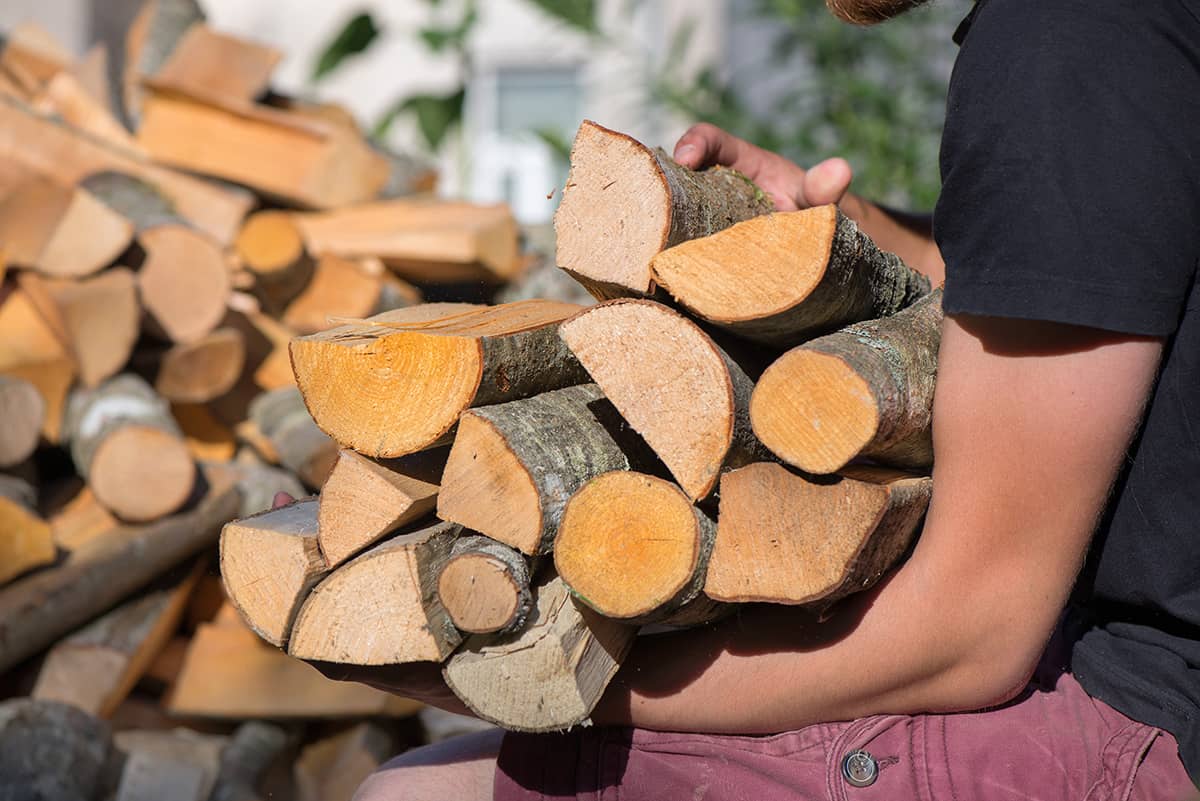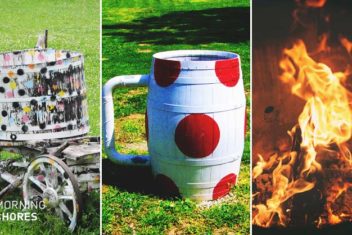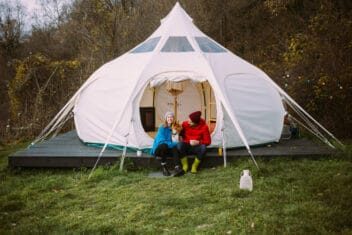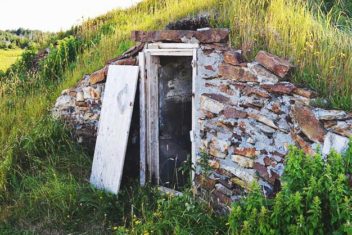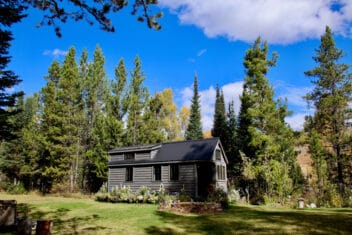In simplest terms, a woodpile is a stack of wood that you’ve chopped or purchased in preparation for burning. Some folks like to get creative with their stacking, while others just toss pieces haphazardly into a shed or barn and hope for the best.
But how much wood will you need to chop for winter? How should you store it? What wood burns best? Well my friends, read on to learn some helpful tips on this topic.
What is a Cord of Firewood?
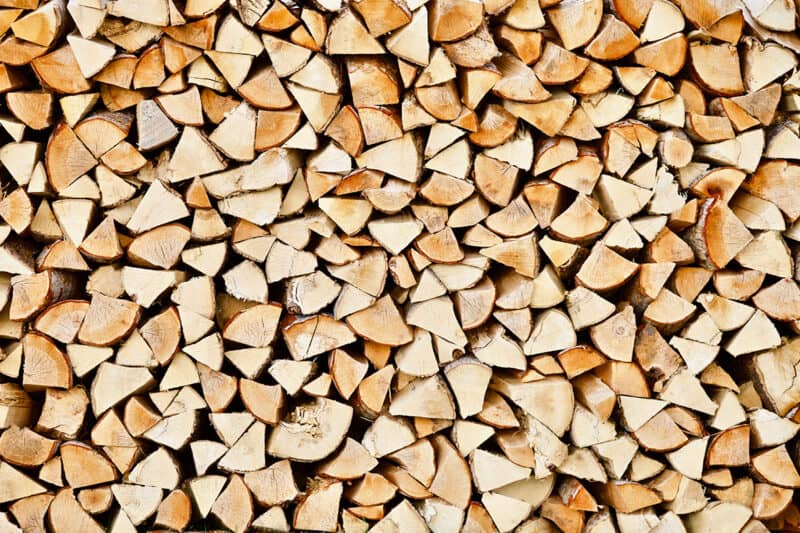
A basic cord of firewood measures 4 feet tall by 4 feet wide, and 8 feet long. This creates a full volume of 128 cubic feet.
If you’re wondering why this unit of measurement is called “cord,” the name harks back to a time when these units of wood were bundled together with a specific length of cord to measure them out evenly.
How Many Cords of Wood Does My Family Need?
Well, that depends entirely on how big your home is, whether you use a burner or fireplace as a primary heat source, and for how long you’ll need to do serious heating.
For example, if you live in a small cabin in a fairly temperate area and just use a fireplace to roast marshmallows on weekends, then a single cord can last you a couple of months. Alternatively, if you have a larger home in a cold region and depend on wood stoves to heat your house, then you might use up a cord within a couple of weeks.
It’s always better to have more firewood cut than you think you’ll need. Not only is it better to have than to have not, but wood always burns better once it’s aged and dried out a fair bit. Whatever you don’t use this year will be amazing next year. Just make sure to shift the dry wood to the front or top of the pile so you use it first next season.
What Types of Wood Burn Best?
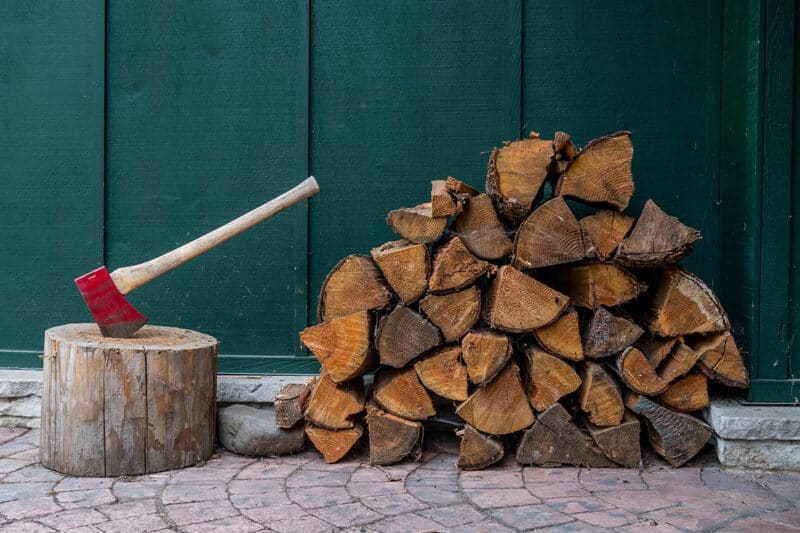
Again, it depends on what you need for what purpose. For example, a good, dry hardwood like oak or maple is ideal for starting a fire, while a thick chunk of pine is great for burning overnight. This is because it’ll be a low, slow burn that’ll keep the heat going while it slowly eats through the wood. Then you can throw some more aged hardwood on the still-burning bits first thing in the morning.
We have a great article on the best types of firewood to burn. They have pros and cons depending on usage: for example, pine is amazing but creates a lot of residue, while birch can be good to burn as long as it’s been aged a couple of years to dry it out.
My personal favorites are:
- Oak
- Maple
- Hickory
- Pine
- Cedar
- Apple
- Birch
- Beech
Avoid using aspen or willow unless you have the luxury of letting them dry out for at least 4-5 years. They’re notoriously “juicy” when freshly cut and will do little more than frustrate you. The same goes for hemlock conifers: they burn like sparky stones.
If you take down a birch tree, make sure to keep as much of its papery bark as possible! Strip this off the cut wood and keep it somewhere dry. It’s an ideal firestarter to use beneath well-dried kindling. On that same note…
Ensure that You Have Kindling Too
All fires need a bit of kindling to get them going. When you come across some really dry pieces of wood, keep them aside. Then once you have a fair number of them, cut them into several thin pieces. Store these in a bin or metal pail near your indoor woodpile so you have plenty of kindling at hand to start fires with.
I like to use a mixture of birch bark, kindling, and homemade firestarters to get mine going. The firestarters are made from cardboard egg cartons that have been filled with dryer lint and a bit of cooking oil. I’ll place one of these in a nest of shredded bark, and tent it with those nice, dry kindling pieces. They light up quickly and once the kindling has caught it’ll ignite dry firewood and logs quite merrily.
How to Store Firewood Properly
There are few situations as miserable as when you’re cold and/or wet, and you’re trying to start a fire with damp wood that just won’t light. This can be downright dangerous if you’re trying to keep yourself and your family warm in the dead of winter and none of your wood is dry enough to burn.
Avoid this scenario by storing your firewood well.
Store it in a Dry Area
Never situate your woodpile in a low-lying area on your property. This is a spot where water will naturally accumulate, with its tendency to follow a path of least resistance. Since you want nice, dry, crunchy firewood, situating it in an area that can turn into a pond after a rain or snow thaw would be counterproductive. Don’t make your firewood lie in a wet spot.
Instead, choose high ground that’s protected from the worst that weather has to offer. For example, on the side of a building that’s usually alee of high wind.
On that same note, if you’re keeping firewood close to the house, make sure you don’t place it anywhere near a spout or drip area.
Elevate the Woodpile
Try to keep your beautifully chopped firewood from touching the ground. You can do this by putting down some long wooden poles and stacking the woodpile on top of it. Alternatively, you can use cement blocks or wooden pallets to raise it up. Whatever will keep it from connecting with the soil.
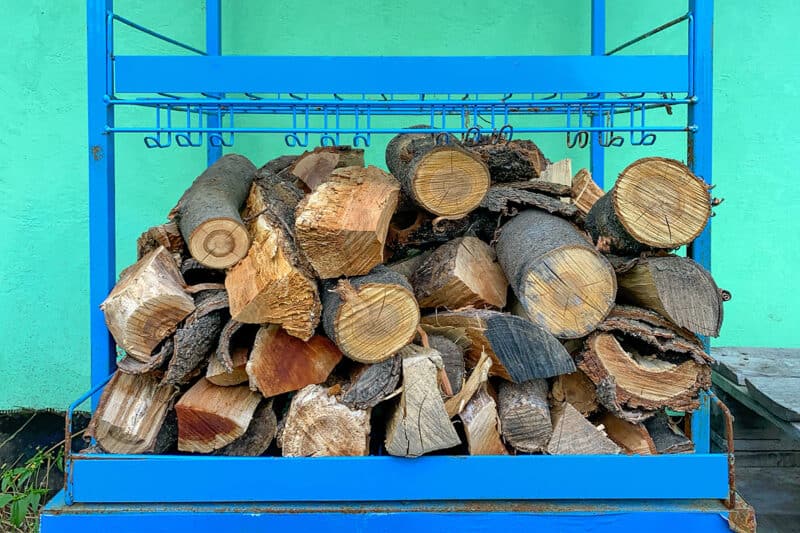
If your firewood is touching the soil, it’ll start to break down and decompose. In contrast, raising it up allows air to circulate around it, thus drying it out so it burns better.
My woodpile is raised off the ground by logs that I’ve lain on top of a gravel bed. This allows for decent drainage and keeps the bottom-most logs from turning into mulch.
Offer it Protection
If you can, create a woodshed where you can stack everything to keep it dry. This can be as simple as pallets joined together beneath a slanted roof to keep the rain and snow off, or as fancy as a full-on shed with a door that can be closed.
If you don’t have the financial means to make something like this happen, that’s okay: just cover your wood cords with some thick plastic tarps and weigh them down with heavy rocks. This will keep high winds from blowing the tarps off.
Another option is to cover the woodpile with conifer boughs, or even stack your firewood beneath some big evergreen trees. You’ll usually see bare spaces beneath large pines and spruces even in the dead of a snowy winter. Use that to your advantage and stack your wood in there. It’ll stay dry because the boughs act like an umbrella over it.
Bonus: when you go to collect a few pieces of firewood, snap off some of the super-dry twigs beneath the main boughs to add to your kindling bucket.
Create an Additional Stack in Another Location
Last, but certainly not least, is this bit of advice: don’t store all of your firewood in the same place.
Many of us have learned this rule the hard way and have lost a fair bit of hard-earned firewood in the process.
Firewood can be damaged or depleted in a number of different ways. For example, theft is a surprisingly common occurrence, especially in semi-rural areas. People who haven’t put in the effort to prep for winter ahead of time will often steal from those who have.
Keep a Small Woodpile Inside the House
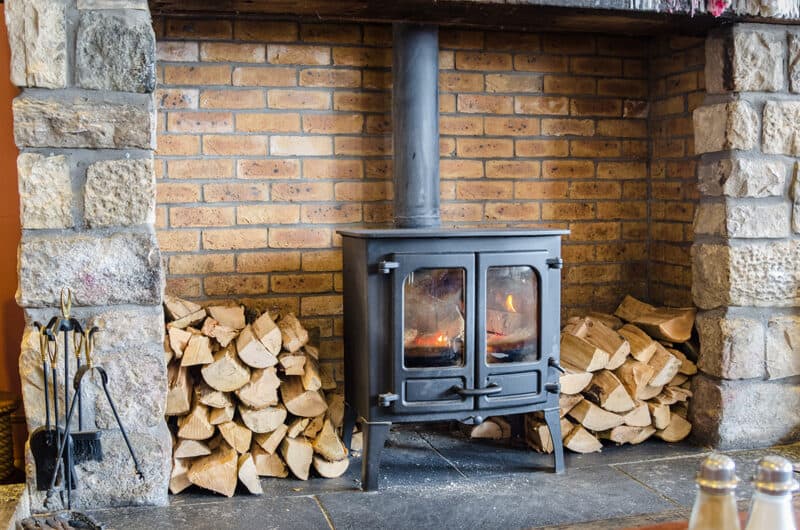
Make sure to keep at least three days’ worth of firewood indoors at all times. Stack some near the fireplace or wood stove to keep it warm and dry, or transform a closet into a storage area. Just watch out for spiders: you can accidentally bring some black widows or large wolf spiders into the house if they’ve tucked themselves in between bark and wood.
In fact, it’s a good idea to always handle your woodpile with care, just in case. Wear gloves when moving the wood around, and keep a jar handy in case you need to trap a big spider.
Additionally, please check each piece of wood thoroughly before tossing it into the flames. I’ve almost accidentally incinerated a few salamanders who had gone into winter torpor in old logs before. Check in logs’ crevices and beneath loose bark for little neighbors who might be asleep. Then you can transfer them into a safer spot if you do find any interlopers.
One note about storing wood in and around your home: be careful about storing a lot of wood close to your house if you live in a fire-prone area. If your region is prone to wildfires, keep any and all burnable materials at least 100 feet away from your home. You don’t want fuel readily available for embers to leap into.
Finally, make sure to keep your tools in good working order. Keep your chainsaw oiled and your axes sharpened, and you’ll have plenty of great firewood to help get you through.
